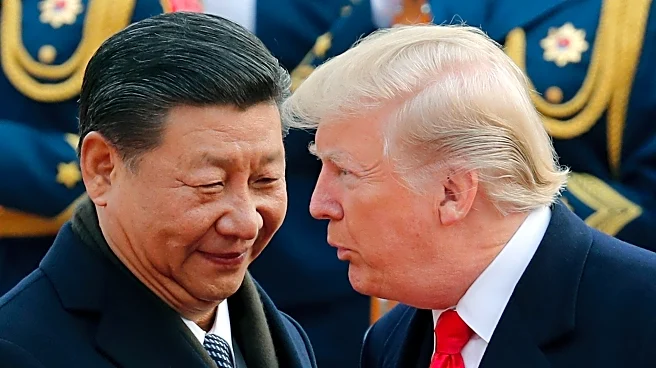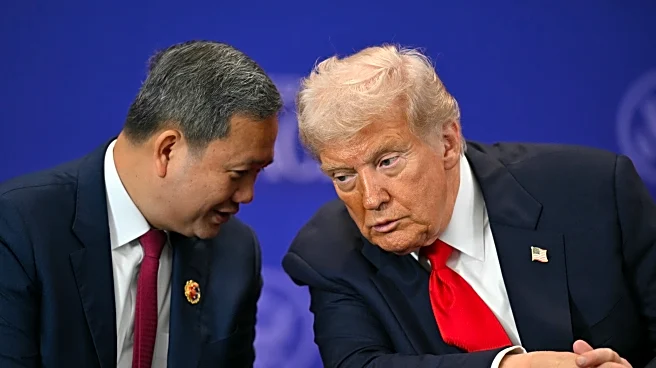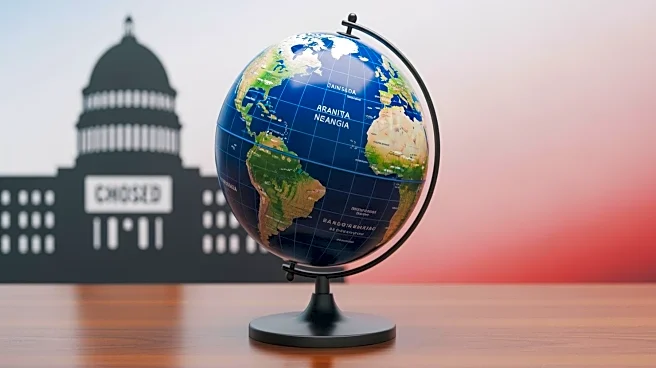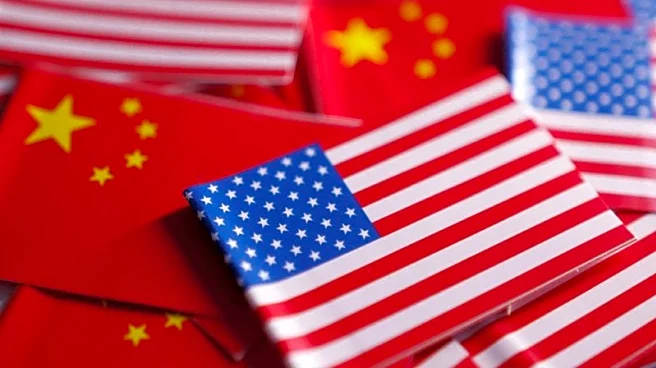What's Happening?
President Trump is traveling to Asia, with planned visits to Malaysia, Japan, and South Korea. The trip includes a significant meeting with Chinese President Xi Jinping to address the ongoing trade war.
The visit coincides with a U.S. government shutdown, affecting federal workers and services. Trump will attend the ASEAN summit in Malaysia, where he will meet with Prime Minister Anwar Ibrahim and participate in a signing ceremony with leaders from Thailand and Cambodia. The trip aims to secure investment deals and promote peace efforts in the region.
Why It's Important?
The timing of Trump's trip is critical, as it occurs during a government shutdown that has disrupted federal operations and services. The meeting with Xi Jinping is pivotal for resolving trade tensions that have affected global markets. Trump's discussions in Japan and South Korea are expected to result in significant investments in U.S. industries, potentially easing tariff rates. The visit highlights the role of international diplomacy in addressing economic and political challenges, with potential benefits for U.S. foreign relations and economic growth.
What's Next?
After Malaysia, Trump will visit Japan and South Korea to finalize investment agreements. The meeting with Xi Jinping could lead to progress in trade negotiations, stabilizing economic relations between the U.S. and China. Trump may also discuss the release of pro-democracy activist Jimmy Lai with Xi. Additionally, discussions with Brazilian President Lula da Silva on tariffs and military operations are anticipated. The outcomes of these meetings could shape future U.S. foreign policy and economic strategies.
Beyond the Headlines
The trip underscores the complexities of international diplomacy, especially during domestic challenges like the government shutdown. Trump's engagement with Asian leaders reflects a strategic approach to balancing economic interests with geopolitical stability. The potential easing of tariffs and investment deals could have long-term implications for U.S. manufacturing and trade policies. Moreover, the discussions on regional conflicts and human rights issues emphasize the multifaceted nature of global leadership and the need for collaborative solutions.













